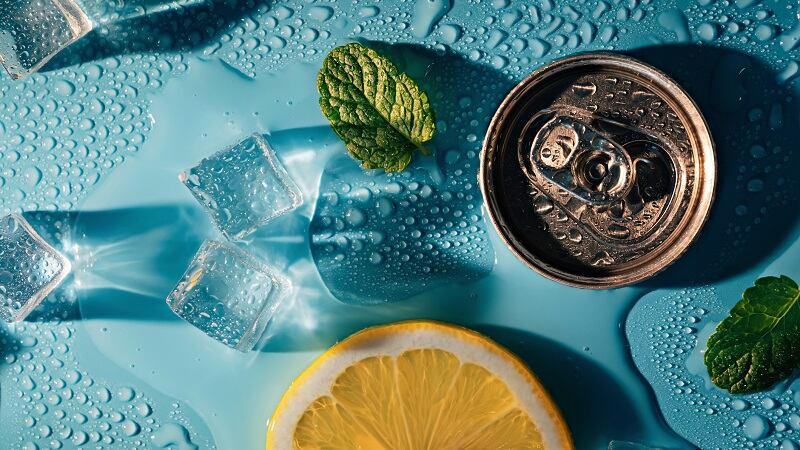Over the years, energy drinks grew to prominence as consumers sought ways to boost alertness and wakefulness. However, energy drink growth is leveling off as consumers moderate their caffeine and energy product intake.
Energy drinks sales reached $16.53 billion for the year ending Oct. 6, growing dollar sales by 4.1%, per SPINS data. The year prior, energy drink sales came in at $15.88 billion for the year ending Oct 6, 2023, growing 15.8% in dollars from 2022 numbers.
Now, consumers are demanding functional foods and beverages for different day parts and occasions, with an opportunity to create relaxation and mood-support foods and beverages, “the other side” of functional, Dicker said.
“Mood-support products across food, beverages [and] supplements are up a point and a half in conventional [retail stores], 14% in natural [retail] and 99% up in convenience [stores]. So that means, as we have seen, the assortment changes in the convenience channel really coming along to be not just your ultra-conventional items, but really bring in some of these more premium, natural and functional products. A lot of that is increased assortment, but you know that people are looking for [mood-support products] on the go,” Dicker said.
A new nightcap: Functional chocolates, sweets for sleep
Consumers increasingly are finding ways to moderate their alcohol consumption, including swapping an alcoholic nightcap for a sweet treat like candy or ice cream as a snack before bedtime, Dicker explained.
Almost half of Americans (45%) said drinking one or two alcoholic beverages a day is bad for health, according to a July Gallup survey of more than 1,000 adults.
CPG brands have a “big opportunity for functional products from that after-work, before bedtime [timeframe],” he noted. Currently, several CPG brands are tapping into this nascent segment of mood-relaxing products.
Special Edition: Mood food for mental wellbeing – How can industry capitalize?
This story is part of a collection of original reporting by FoodNavigator-USA exploring the business opportunities and potential pitfalls of making and marketing mood-boosting foods & beverages.
Read the full collection in this month’s letter from the editor or if you are a FoodNavigator-USA subscriber by checking your inbox for the special edition on mood food for mental wellbeing.
If you are not yet a subscriber, register for our free newsletters, which include daily news, weekly podcasts and monthly special editions on timely topics.
For instance, Nightfood offers a line of sleep-time cookies formulated with melatonin-rich ingredients like oat flour to promote sleep. Additionally, The Functional Chocolate Company offers a chocolate bar formulated with chamomile and magnesium and Alice Mushrooms offers chocolate with reishi, l-theanine and chamomile, both designed to promote sleep.
Mood-boosting products without functional ingredients
While some brands focus on functional ingredients, other CPG brands are honing their messaging with a focus on mood-boosting benefits without necessarily needing to formulate a different product, Dicker explained.
“Let us say you are advertising, ‘You do not want to be hangry,’ so [a product can have] a lot of protein and fiber in it that increases your satiety. And so technically, that could increase your mood too because when you are hangry, you are probably not in a good mood. And so, just thinking about new ways to position established ingredients [is really] the No.1 recommendation I make for brands and ingredient suppliers alike,” Dicker said.
Similarly, comfort foods are another way consumers receive mood-boosting benefits, Dicker noted. This provides CPG companies an opportunity to hone their message around mood support and mental health without needing to add functional ingredients, Dicker explained.
“When it comes to food, a lot of it is just these traditional comfort foods, rather than an added functional ingredient ... but it still gives [consumers] that specialty feel. And so, when we talk about specialty, you can look at ultra-premium things as well as different global flavors. ... They would not be specifically marketed as a mood-support product, but I believe a lot of consumers are choosing those comfort indulgences as that end-of-day product,” Dicker said.
Protein’s unprecedented ‘health halo,’ connects to mood support
Consumers seeking satiety ─ and the mental benefits from the feeling ─ are turning to protein, and protein maintains an unprecedented “health halo” while other macronutrients are vilified, Dicker said outside the video interview.
Whey protein “is doing really well right now,” as plant-based protein continues to struggle, he noted.
“Fats are vilified and celebrated, different types of carbs are vilified and celebrated, [but] protein ─ for the most part ─ is just sought after. And so, what is remarkable is you see protein-enhanced products in every [corner] of the store pretty much,” Dicker elaborated.



